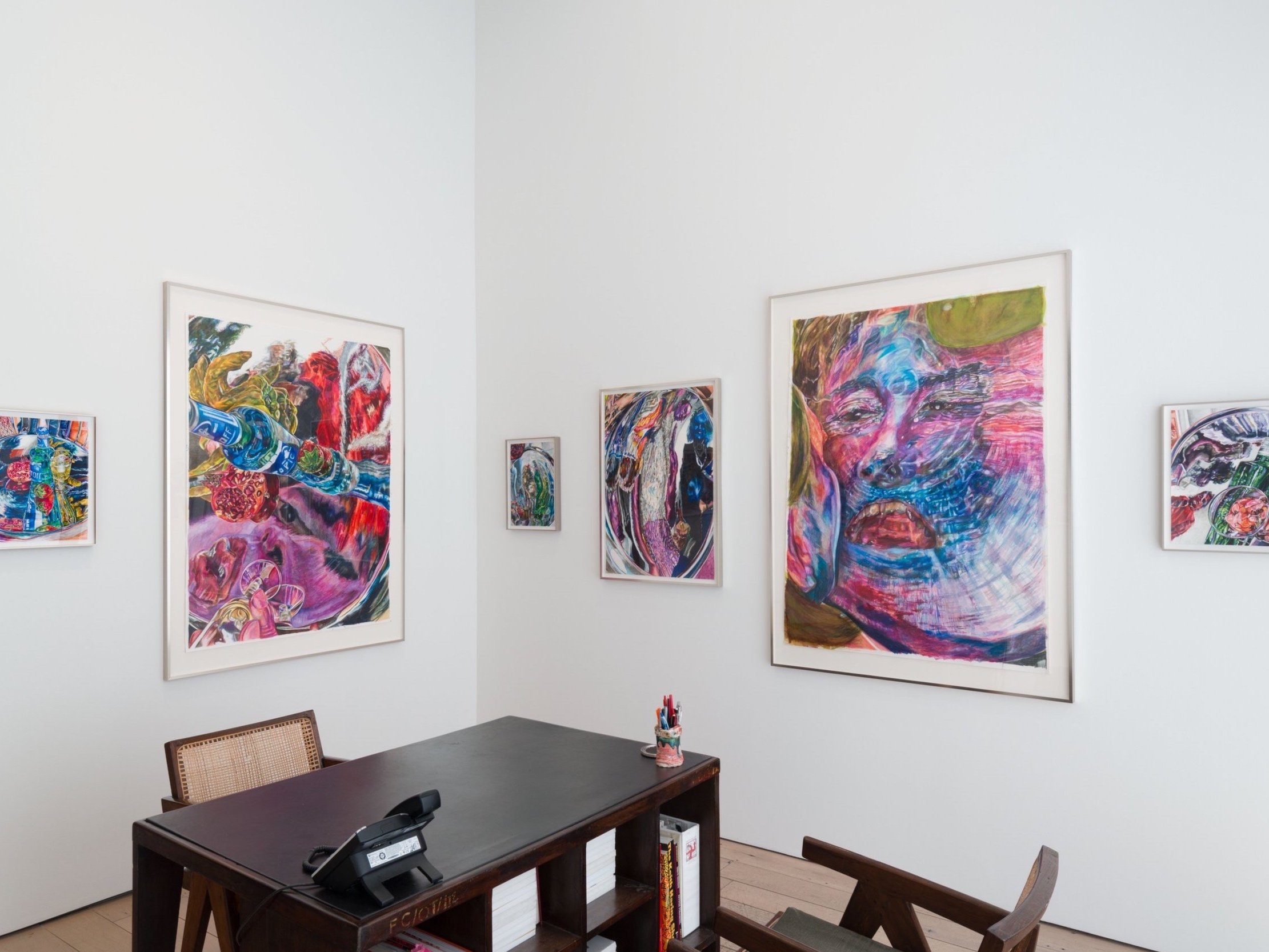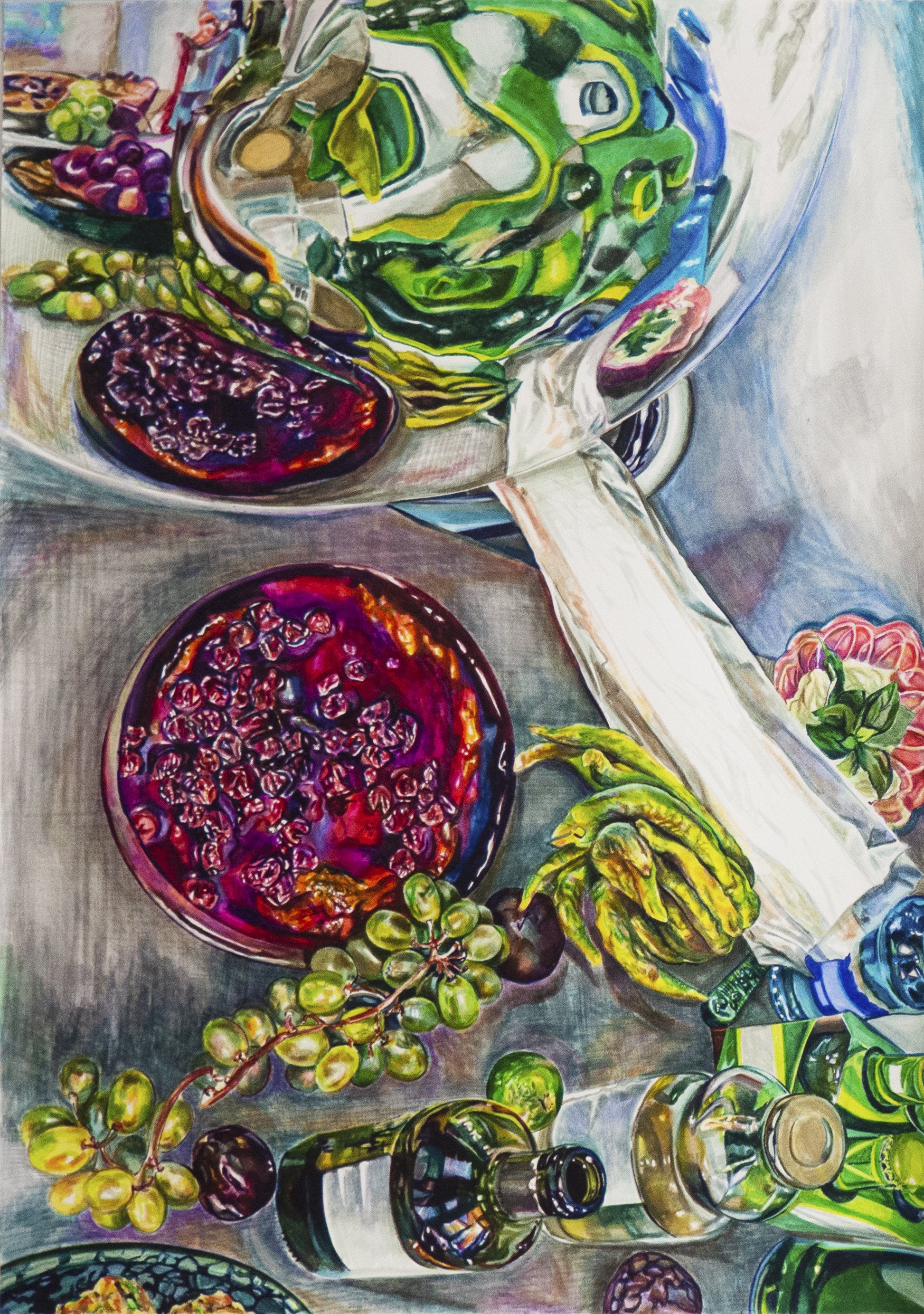Martos After Dark
presents
NARCISSUS ABDUCTION
Giulia Messina
Currently on view
41 Elizabeth Street
PRESS RELEASE
Where vivid still lives coalesce with erotic performance, Giulia Messina taps in and arbitrates her own theater of play. She organizes a situation to share with her willing participants, encouraging costumes as this allows for an alteration of self and submission to character. Messina prepares food and a table installation, which are offerings to her guests. In the bathroom, a makeup atelier is designed to inspire further play. These situations become a theater of improv, without prescription, but inscribed with opportunity for exploration. All the while, Messina documents the happenings, and later selects the images before committing them to her drawings.
This mode of engagement, i.e. facilitating a specific gaze, is wracked with the contemporary problem of extreme perception - that of the self and others. The various avenues for engaging with one’s likeness have been multiplied through an advanced system of techno-relationality. Appearances are now refracted through filtered interfaces with which one can bend realism into a more “desirable” form.
For this exhibition, the mirror recurs with magnetic appeal, functioning like a portal to another dimension. The surface Messina utilizes has a warping effect: from further away the user is upside down and heavily distorted. The closer one gets, however, the reflection grows more vivid and eventually flips to the right orientation and is severely magnified. This creates an abduction from reality, and a submission to hyperreality. Messina marks this process specifically in her aptly titled work Did you see that magic portal bordering the table? in which a collection of fruits and mess of bottles appear mirrored in the reflective orb punctuating the composition’s top edge. The bottles, on one hand, disperse into a pool of abstraction while the other recognizable forms are pushed to the edge of magnification.
She materializes a concept put forth by Jeff Koons in his Gazing Ball Paintings, inverting her perspective and rendering it instead of Koons’s mirrored orbs. “This experience is about you,” says Koons, “your desires, your interests, your participation, your relationship with this image.” Where Koons cites his work as reflecting out into the world beyond his objects, Messina’s compositions are bent toward a specific, unrelenting interior world. Tony Matelli’s mirror paintings are also a clear point of departure for Messina. These two artists are aligned on the level of mirror-as-portal, a transformative device. Matelli’s reflective objects are tightly rendered, asserting that his works were made “to frustrate the idea of a clear subjectivity.” Messina submits to a more illusory approach in her exploration of form, manipulating both image and signification.
Messina’s references extend into the realms of film and literature. She traces the resounding absurdity of Lewis Carroll’s Alice in Wonderland, invested in her personal “rabbit hole.” Carroll outlines an event that prompts extreme change, an irrevocable trigger of a switch - Messina takes note and carries on with the same intentions. She likewise taps into the works of Jacques Demy, Jean Cocteau, and Peter Greenaway, moved by their cinematic revelations; Demy, with his nostalgia-soaked eccentricity; Cocteau’s mythopoetic dramas; the extravagant sets of Greenaway, and his inflections of art history. The grand and intimate are thus staged on the same picture planes, Messina at the helm to mediate the forces and relegate them to her illustrative worlds.










